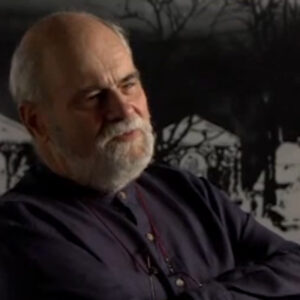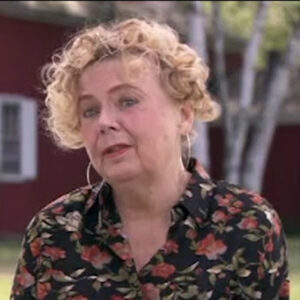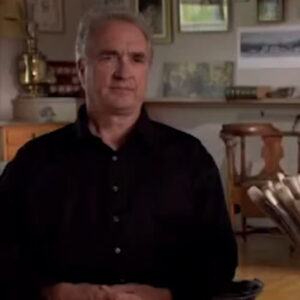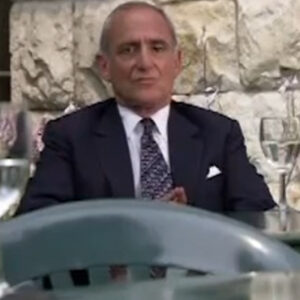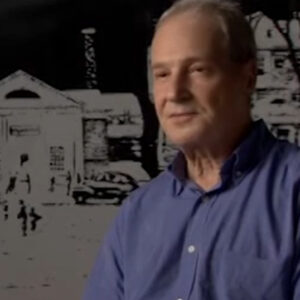Speaker So tell me about your very first memories, if you will, of Rockwell.
Speaker Well, I remember Rockwell from his home on Saturday Evening Post covers when I was a when I was really in elementary school and junior high school and high school. And they had a profound influence on me. I really think that they were they would come late Saturday Evening Post would come every week. The Saturday Evening Post cover took on the kind of dimensions that perhaps today as television situation comedy might have. It was something you gave an enormous amount of attention to. It was entertainment and it was there. The magazine was there sitting around for a week. So I studied them very carefully and I was interested in art as well. So I think it had a huge effect on me.
Speaker They really were. A little story is right that you could read almost visually.
Speaker Norman Rockwell is one of the great storytellers, one of the great American storytellers. He is in a category with Mark Twain and Booth Tarkington. And I don’t know, I mean, maybe Steven Spielberg and other of the Walt Disney. I mean, he was one of the great American storytellers and he created Norman Rockwell really created a lot of the images that cause us to see America the way we see it, that created our experiences of America.
Speaker I think.
Speaker In what sense? Well, for example, Norman Rockwell, can we. What is that from there? Sorry. Okay. Come to a soundstage. We probably should take that last night over a storyteller like.
Speaker Okay. I like to just quick think maybe there’s a couple more I should think of. Know the last line about Norman Rockwell being a great storyteller.
Speaker Me know where we’re. OK.
Speaker Norman Rockwell is one of the great American storytellers. He’s in in the in the league of Mark Twain and Booth Tarkington and Walt Disney and Steven Spielberg and all the great American tale tellers.
Speaker And then you ask me.
Speaker And the story he was telling.
Speaker The story he was telling. Yeah, well, he met Rockwell, created the the images that that are the images that we think of as being particularly American. For example, if you take what he did for Thanksgiving and compare it, say, to what Thomas Nast did for Santa Claus and Christmas, Norman Rockwell Thanksgivings were just classic. The grandmother and the grandson in the diner and the family.
Speaker I’m sorry. We’ve got we’ve got to fix this phone. This is really sorry.
Speaker We’re going again, OK?
Speaker We were talking about the stories he told and you were talking about think his images of Thanksgiving.
Speaker Norman Rockwell, Norman Rockwell really created a great deal of what we think of as the American Thanksgiving. His images of the grandmother and the grandson in the diner and the family around the table are images that I think have affected every American. And their idea of that holiday in the same way that Thomas Nast had in the earlier century created an image of Santa Claus and Christmas. Norman Rockwell really did the same thing for Thanksgiving, I think, on a white Christmas, too.
Speaker I mean, the image behind us, Main Street, Stockbridge.
Speaker Yes, Christmas. Well, every holiday, really. I mean, I think he he sort of covered all the bases. I think he got a chance to do almost every holiday. But his his images of America are really the ones that form our idea of ourselves. And I think that when any artist does the kind of work where you find yourself going around looking at things and saying that looks like a Norman Rockwell, that’s a Norman Rockwell kind of image, then you know that he’s had a huge effect on the way people think and the way they see things.
Speaker How do you explain the power of his images? An emotional as a technical both?
Speaker Well, I think that he had a gift for seeing what’s actually seeing what’s there and then heightening it and taking the ordinary and lifting it up to being universal. And I think that’s a gift that that’s what great storytellers do. They take very ordinary common material and elevated into a kind of universal experience. I remember when I was a kid looking at the cover where the young man’s going away to college and he’s sitting on the running board of the truck at the train station, examining that picture in every detail in it and looking both at the technique, which was marvelous. And at the characterisation and the storytelling. It was really incredible painting.
Speaker What did you learn from the terms of technique?
Speaker Well, I remember one of the things I learned was that the way that he used red and green and the shadows and little flecks of color here and there, I mean, it was it was a very rich painting. And then I would look very carefully at the way he he drew the characters and the and the body language he used and having the young man sit there sort of stiffly in the older man make a little more leaning forward and a little more.
Speaker I’m so tired, I guess. And then the young man’s looking forward and the young and the old man’s kind of sad. It’s a it’s a really an excellent portrayal.
Speaker He was a lot more sophisticated in terms of technique than the average light person might think.
Speaker Right. Well, his his one of the things I saw when I was on my way to art school in New York, there was an exhibition of his work at the Corcoran Museum in Washington, D.C. and I went to look at the sketches and the drawings and some of the originals.
Speaker And yes, his his his mastery of paint and the way he could do show light and shadow and and texture was was quite, quite extraordinary. He was I think he probably learned a lot from the Dutch painters who showed, you know, those kind of the kind of Dutch still life painters and the Dutch painters of John Racine’s where they showed the light coming into. People like roomier.
Speaker Course, when you went to art school, how was Rockwell sort of?
Speaker Well, most of us, when I was a student at Rockwells, when I was a student, when I was a student at art school, most of us saw Rockwell as as a little bit old fashioned and a little bit corny, I think.
Speaker We never were. We were always admiring him in the sense that we always recognized that he was a master illustrator and a master of technique. But I think by the time I was in school, he was seen as being a little bit of an older generation and we were trying to do things that we considered newer and more contemporary.
Speaker Plus, there’s this great debate about art versus illustration. I guess they’re two strands. I mean, what’s Rockwell, just an illustrator? And should there be this division? Speaking as an illustrator or so?
Speaker Well, I it’s an art versus illustrations.
Speaker Always been one of the things that people talk about, really. There’s good art and bad and there’s good illustration and bad illustration. And I don’t really try to get too much into the argument about whether illustration is art or or not, because it seems like it finally it’s a kind of fruitless argument. But.
Speaker The the thing that I think that’s more important about Rockwell is not whether or not he’s a great painter, but the fact that he was a great, great, great storyteller and and that his images go beyond technique and art and they go into literature. I think in that sense, he’s really a literary artist as much as he is a visual artist.
Speaker Do you think their time was or are they going to hold up?
Speaker Well, the great thing about his work is that it is so much of its time and whether it holds up or not.
Speaker I think we’ll always look back on it and see it as being absolutely expressive of the time it was created. In the same way we look back and see works of the 19th century or the 18th century and 17th century as being of their time. I think that the work will hold up better maybe in 100 years or 200 years because it won’t have the same kind of baggage that we bring to it.
Speaker Now, what is Rockwell’s influence on people like yourself?
Speaker Well, I don’t think that there are any any people. I don’t think there are any illustrators alive who haven’t been affected by what Rockwell does.
Speaker You’re you’re either affected by it in the sense that you are like it or you’re against it and you can’t, but you can’t. Not notice it. I mean, he’s there as a major illustrator. Maybe the major illustrator of the 20th century. And no one else has done as much as he’s done. No one else has had the impact that he’s had. And it goes right through our life. I mean, it is he has created our image of ourselves to a great extent. And we can argue with it or we can go against it, but it’s still there and it can’t be ignored.
Speaker Can you think of specific examples of how we see Rockwell’s images reflected back at us? Think of advertising movies.
Speaker Well, let’s.
Speaker I think that.
Speaker Everything that we believe about small town America comes from Norman Rockwell, or at least a lot of it does. I mean, that maybe there was a little too sweeping, but a lot of what we believe about small town America and life and the suburbs and life in the United States comes from Norman Rockwell. All of the wholesomeness and the wonderful qualities and the.
Speaker The kind of.
Speaker Visits to the doctor and. And life at home and people coming back from the war and all of the images that he handed to us are the are the images that we’ve that have stuck with us and that we’ve enlarged upon and told more stories about. We’ve taken Norman Rockwell characters in and put them into other settings in a way. I think even if you take television to stories like Archie Bunker or Maude or some other television situation comedies, I think that’s the best comparison that we’ve we’ve taken these characters and given them another story and another life and carried them on into our into our present.
Speaker Yeah, that’s an interesting point, that TV entertainment would be the legacy, Rockwell, in the sense not, you know. Well, much of the art world.
Speaker Yes. Because I think illustration today has not got very many reflections of Norman Rockwell in it. What has happened, though, is that it’s moved over into other media like movies and television, and so that the heritage heritage of Norman Rockwell really is in other places. There’s not very much. And an illustration because of the way that illustration has gone, is that it’s not the central position that it was when he was doing it. It’s it’s become more peripheral and it’s it’s not a major entertainment in the way that was when he was practicing it.
Speaker Yeah. I mean, his covers really played the role that television plays today, right? Yeah.
Speaker And the power of the Norman Rockwell cover was the equivalent to a television show today, perhaps, or in fact, any, you know, any Saturday Evening Post cover, whether it was by Norman Rockwell or or by Steven Honcho’s or John Faulter or whoever it was by the Saturday Evening Post cover. The 1950s was the height of a form. And we don’t know that form doesn’t exist today. Did you ever meet Rockwell personally? No. I wish I had. I met his son a few months ago in Rome.
Speaker I went away.
Speaker I, I gave a talk at the American Academy in Rome about my work, and I was showing some slides. And I remember the story of Norman Rockwell, which was that he I saw him on television once and he was being interviewed and he said whenever a picture is going really badly, I put a puppy in.
Speaker And if if it really is bad, I put a bandage on the puppies foot. And I told this story. And after Peter Rockwell said he never did that. And I don’t think I ever did see a puppy in a Rockwell with a bandage on his foot, although it’s something he could have easily done. But he did tell the story. And I think it was a way of making fun of himself that he I think he must’ve been. Quite a wonderful man to know, and I think he must have been very much more self-aware than we imagined. Well, he did try to work his audience, right? Well, I think that he had. I think one of the interesting things about his work is that he really made an effort to please people and to tell an acceptable story. I think later in his career, when he was doing the paintings about Mississippi, when he did some of the social paints, a little girl being escorted in the school by the by the marshals, for example. I think at that point he he was.
Speaker Trying to talk about social issues because probably he realized that a lot of his work had a certain amount of sugar coating to it, and then it was a little bit too too happy and too perfect a picture.
Speaker And I think that he tried to alter that picture a little bit in his later work.
Speaker I mean, I’ve heard that he sometimes expressed frustration that he was, in a sense, maybe trapped on one style that had been so successful that, you know, he didn’t branch out. I mean, I was wondering what your assessment was of his capabilities as a artist, if he could have done something different or.
Speaker Well, I think that when an artist has the skills and the abilities and the technique that Rockwell has, he can do anything. And if he didn’t do something different, it was because he lacked the will to do it, not because he lacked the technique or the skill. I think that there is a trap in that kind of success that kind of like he must’ve felt to a certain extent, trapped by his image. By by people expecting another Norman Rockwell painting.
Speaker Out of. From him.
Speaker And and that must have must have been tough sometimes, because I’m sure that with the kind of invention and mind that he had, he would have been able to do almost anything.
Speaker Do you think there one period in his work that was greater, if you will, on other analysts?
Speaker Well, I think the real highlights of his career came probably in the 50s and 60s, and the earlier work was perhaps a little bit more was a little bit sweeter.
Speaker But when he got into the 50s and he did the Four Freedoms and he did some of the paintings, like the one I mentioned of the boy going off to college, and some of the more the the paintings that had both happiness and sorrow mixed in them. He was great. Those were his greatest works. And I think that the weakest works are the ones where he was just trying to do something that was a little bit too charming or too happy. And I think that’s these are issues that all illustrators face that that you’re working for a mass audience. You have to please them. You have to do work that’s acceptable. And that’s going to go and go on to be published and not be rejected out of hand. And so you’re faced with this issue all the time of communicating to everybody that to a certain extent you want everyone to understand what you’re talking about. But you don’t want to be. Too eager to please. I think and I think that’s a failing. That was what was happening to illustration probably in the 50s and 60s just before television took over. And I think that’s an effect that we have in television today. And the same thing that popular art has always had that problem of having to please a large audience, of wanting to reach out to a vast number of people. And the great popular artists are the ones that have managed to rise above it and and not give in to it all the time and and try to get around it and try to express important ideas in spite of the fact that they’re working in a popular form.
Speaker And you would say Rockwell did rise above it?
Speaker I think he did. I think he did at his best. I think he went well beyond what we could expect from, you know, every day illustration. And well beyond what was demanded. He was really a great artist in that sense.
Speaker I mean, there is the criticism of the popular art. And certainly commercial art can’t be great art. But on the other hand, as somebody pointed out, there wouldn’t be much well-known Western art, you know, with the sense much of Western art was commercial. Right. It was done. Well, I’m not sure.
Speaker I mean, I think that’s I think that’s absolutely false. First of all, because what it was just consider. Well, OK. I think the idea that popular art is only it can’t be as great as as great art is absolutely false because so much of what we consider great art today really started out as popular art. And it goes if you take Japanese woodcuts away, we’re one of the great popular arts and it is one of the great art sort of anytime. If you look at popular arts from almost any period, you’ll find that when the smoke clears, there will always be great art and popular art because it’s a representation of our everyday life.
Speaker And it doesn’t start out with the same pretensions and therefore has some of the advantages of being more true and less. Less. It’s direct. It’s it’s for the people. And I think it’s up to us whether we have great popular art or not. It’s really up to the people who consume it in a way. If we take an interest in it and understand it and and reject what’s false about it and for example, in American movies are one of the great, great popular art forms. American jazz is a popular art form. I mean, anyone who says popular art is not great, art is absolutely wrong. And Norman Rockwell did not rise to great art every time, but I think he had a pretty good average. And I think that he he did work that will certainly we look back on us as an example of his time. And and I think that he affected the way we see the world and particularly the way we see America. I’m not I’m not just trying to make a case at Norman Rockwell as a great artist. But I do think it’s almost easy. I think that popular art sometimes becomes almost invisible to us. And it’s and we don’t understand how important it is and we don’t understand how great it is because we swim in it. It’s like the air and we don’t know how valuable it is until it’s not there anymore. And there are art forms today that we that were not particularly noticing that will be looked back on in 100 years since and considered. Invaluable and and wonderful expressions of our time.
Speaker Wolf Rockwell, painting The Real America or Rockwell, I think created Rockwell’s America, which was a kind of an ideal. It wasn’t exactly real America. And yet.
Speaker It certainly wasn’t a false America either. It was he was painting all those things, he was taking all those things that exist in our life.
Speaker And he was showing us, reflecting them back at us and and commenting on them on. I mean, some of the some of his works are like very elaborate cartoons, like the two plumbers and the ladies, you know, with a perfume bottle spraying each other. And that’s just a very funny cartoon. And it has a kind of that’s like when Shakespeare would show you a couple of the other rowdies and make a comic characters. Right. Characterization of them. But then he goes on to showing how it is to be a teenager growing up, how it is to be. Parent, how it is to be mother and father and. All those things are true. They’re they’re not they’re not true for everybody, but they are true for some people. And they’re they’re true characterizations of the way some that some of our life is made. They’re getting a little complicated here. But I’m not. I’m trying to say that.
Speaker That he did have a tendency to. He had a tendency to create to take the ordinary and make it into an icon or a characterization or an exaggeration in order to make his points. And that’s what storytellers do.
Speaker Freedom from want certainly comes to mind.
Speaker The aim is freedom from what is a great picture and. Freedom of speech and then all those are. Are there great images?
Speaker And they are idealistic images, but they’re not quite true.
Speaker You have a favorite, Rockwell.
Speaker Well, I keep going back to the one of the boy going away to college.
Speaker I think I probably spent more time with that one than with most and. And it was it seemed to fit in my time of life and where I was. So it had a big effect on me. Yes.



